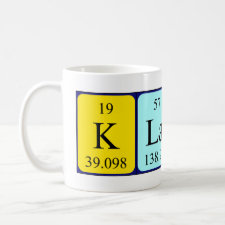
Authors: Mosbach K
Article Title: Toward the next generation of molecular imprinting with emphasis on the formation, by direct molding, of compounds with biological activity (biomimetics).
Publication date: 2001
Journal: Analytica Chimica Acta
Volume: 435
Issue: (1)
Page numbers: 3-8.
DOI: 10.1016/S0003-2670(01)00800-5
Abstract: I would like to share with the participants the background and insights that made us work in what is now called molecular imprinting. In retrospect, for us it came as an intellectual by-product from early studies on immobilized/entrapped enzymes and cells and that of affinity chromatography. As for the former aspect, once it was shown that enzymes could be entrapped in a gel matrix and remain active, the idea came up of whether it would be possible to subsequently remove the bio- catalyst, leaving a cavity (shape) behind, specific for rebinding the very same protein. As to the other aspect, that of bio-affinity chromatography, this gave us the insight that most biological interactions such as those between inhibitor and enzyme or antigen and antibody are non-covalent by nature. This is why in our studies trying to mimic these systems, we chose print (template) molecules and polymerizable monomers that will lead to non-covalent interactions. Combining these two principles (shape and functional complementarity) various specific imprints were prepared over the years, the properties of some of which (especially 'plastibodies') will be discussed. Subsequently I intend to discuss research done in our laboratory over the last number of years with the goal of synthesizing directly on a bio-molecule such as an enzyme or cell, structures complementary for instance to the active site, e.g. by a polymerization process; a kind of direct molding. Examples of such studies with the aim of creating inhibitors, agonists or artificial competing affinity ligands will be given. Studies in these directions might contribute to what could be called the next generation of molecular imprints. (C) 2001 Elsevier Science B.V. All rights reserved
Template and target information: Review - MIPs



Join the Society for Molecular Imprinting

New items RSS feed
Sign-up for e-mail updates:
Choose between receiving an occasional newsletter or more frequent e-mail alerts.
Click here to go to the sign-up page.
Is your name elemental or peptidic? Enter your name and find out by clicking either of the buttons below!
Other products you may like:
 MIPdatabase
MIPdatabase









